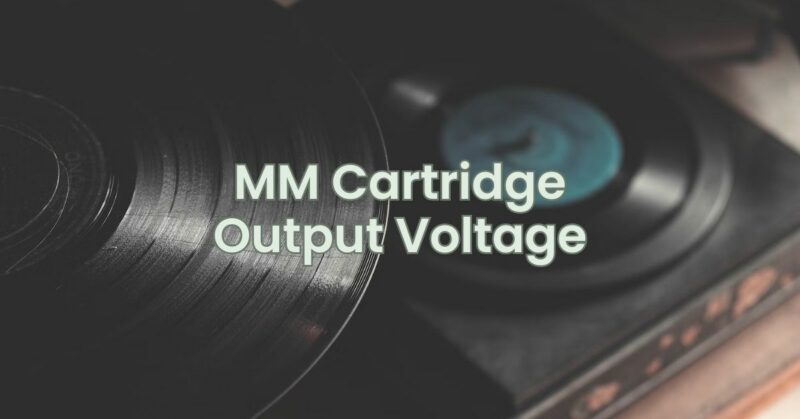Moving Magnet (MM) cartridges are widely used in turntables and renowned for their affordability, versatility, and ease of use. One important specification to consider when selecting an MM cartridge is its output voltage. Understanding MM cartridge output voltage is essential for achieving proper amplification and compatibility with the phono preamp and audio system. In this article, we will delve into the basics of MM cartridge output voltage, its significance, and how it influences the overall sound reproduction.
Understanding MM Cartridge Output Voltage: MM cartridge output voltage refers to the electrical signal strength generated by the cartridge when tracking the grooves on a vinyl record. It is typically measured in millivolts (mV) and represents the magnitude of the electrical signal that is sent to the phono preamp for further amplification and processing.
Significance of MM Cartridge Output Voltage: The output voltage of an MM cartridge plays a crucial role in determining the compatibility with the phono preamp and the amplification requirements of the audio system. Here are some key points to consider:
- Amplification and Gain: The output voltage of an MM cartridge is higher compared to Moving Coil (MC) cartridges. This higher voltage simplifies the amplification process, as it requires less gain to reach line-level output. Many phono preamps have built-in RIAA equalization and gain stages optimized for MM cartridge voltage levels.
- Phono Preamp Compatibility: MM cartridges are generally compatible with a wide range of phono preamps, including integrated amplifiers or receivers with built-in phono stages. These preamps are designed to work with the higher voltage output of MM cartridges, allowing for straightforward integration into various audio systems.
- Turntable Setup: When setting up a turntable with an MM cartridge, it is important to ensure proper matching between the cartridge’s output voltage and the phono preamp’s input sensitivity. The input sensitivity of the phono preamp should accommodate the output voltage range of the MM cartridge to prevent overloading or under-amplification.
- Gain Adjustments: Some phono preamps provide adjustable gain settings to accommodate different cartridge output voltage levels. These settings allow fine-tuning to achieve optimal signal levels and sound reproduction. It is essential to consult the specifications and user manual of the phono preamp to determine if it offers gain adjustments and how to properly set them.
Choosing the Right MM Cartridge Output Voltage: When selecting an MM cartridge, consider the following factors:
- System Compatibility: Ensure that the MM cartridge’s output voltage is compatible with the input sensitivity of your phono preamp or integrated amplifier. The cartridge’s output voltage should fall within the preamp’s specified range to ensure proper amplification and avoid signal distortion or insufficient gain.
- Sound Preference and System Setup: Consider your sound preferences and the characteristics of your audio system. While MM cartridges generally have a higher output voltage, the overall sound quality is influenced by various factors such as cartridge design, stylus quality, and turntable setup. It is important to listen to different cartridges and seek recommendations to find the one that best matches your desired sound reproduction.
Conclusion: Understanding MM cartridge output voltage is vital for achieving proper amplification and compatibility within your turntable setup. The output voltage influences the compatibility with phono preamps, the amplification requirements, and the overall sound reproduction. By considering the compatibility with your phono preamp, gain adjustments, and your specific sound preferences, you can select the MM cartridge with the appropriate output voltage that will deliver the best sound quality and performance for your vinyl listening experience.

